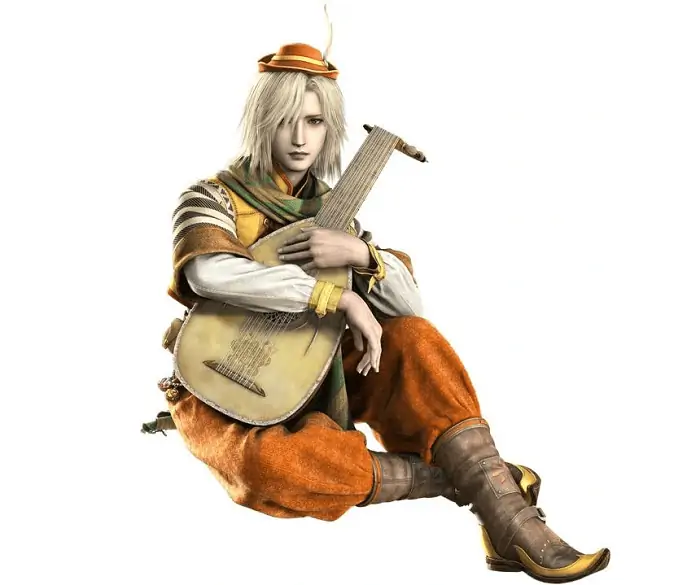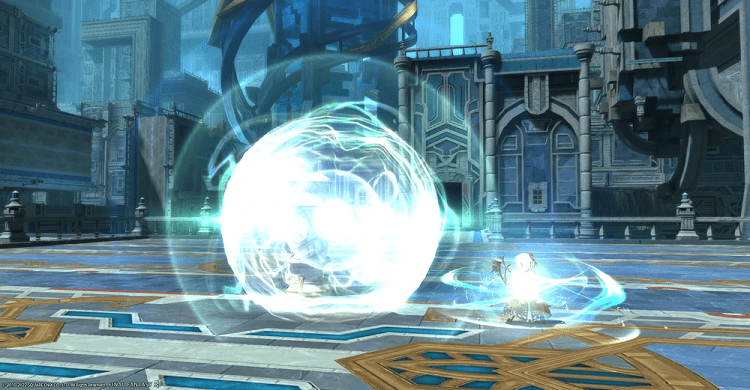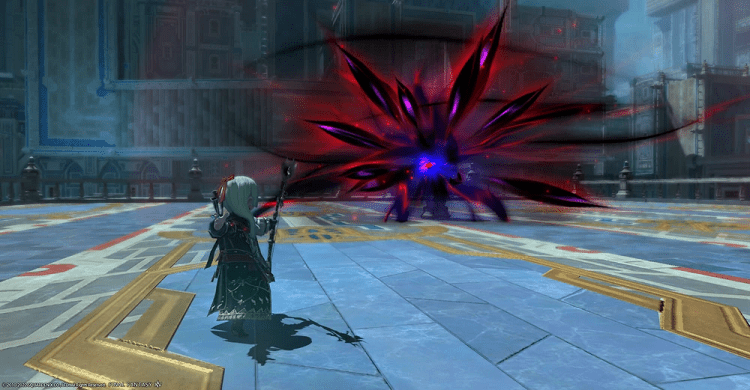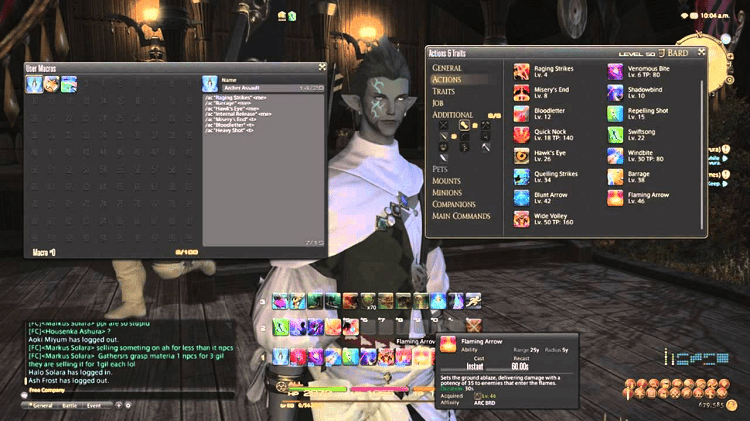- Hermes FFXIV Guide - February 2, 2023
- Every Final Fantasy Game Ranked - January 28, 2023
- Hydaelyn FFXIV Guide: Facing your Maker - January 22, 2023
The power to touch the souls of others through music and songs is the heritage of the Ancient Bards.
A new generation of bards born in the city-state of Gridania reclaims their once-lost power.
The emotions of a bard can be turned into magic and change the world around them. For example, at any given moment, a song might change the course of a battle.
Bard is a job that received a lot of criticism pre-Endwalker. However, with the latest expansion’s improvements, it is time to shoot back.
I joined Bard Guild for the glamor but stayed for its unique, all-in-one feeling. Of course, once you get to the higher levels, you will unlock the coolest-looking gear. Also, you’ll be able to master the most graceful skills and perfect your performance.
In this Bard Final Fantasy guide, you’ll learn how to do this yourself! We’ll cover Bard’s mechanics, cooldowns, abilities, and rotations so you can confidently call the tune in battle.
The TL; DR
I encourage you to read the complete guide to fully comprehend this job. Still, you can whistle to your own tune with this shorter version:
Job: Bard
Type: Physical Ranged DPS
Playstyle: Bard bases their rotation on their priorities, which are as follows:
- Keep damage over time active
- ABC: Never stop casting
- Mind your rotations and Procs
- Know your songs and stances
- Manage your Soul Voice Gauge
- Learn about other OGCD skills
- Balance your cooldowns and buffs
Rotation
- Straight Shot
- Bloodletter
- Internal Release
- Windbite
- Venomous Bite
- Raging Strikes
- Blood for Blood
- Bloodletter
- Barrage
- Bloodletter
- Flaming Arrow
- Heavy Shot
- Straight Shot
- Windbite
- Venomous Bite
The Complete Bard Guide

First, Bard’s battle design focuses more on a priority system. You’ll just need to prioritize some things over others.
Before talking about personal stances and skills, remember those important priorities.
Priority 1: Keep DoTs Active
You learn Venomous Bite at level 6. Your first priority is keeping DoTs active on as many targets as possible.
This will be rounded up by Windbite on level 30. Finally, these skills are transformed into stronger versions on level 64.
At level 56, you learn Iron Jaws. This should help keep DoTs active. Iron Jaw resets your DoT effect’s timer.
Iron Jaws is also helpful to snapshot DoT. Snapshot, in this case, is not a pic. It resets the timer, but you should focus on keeping buffs and cooldowns active. Your buffs are: Raging Strikes, Battle Voice, Raging Finale. Oh, did I mention this skill covers buffs from other party members?
These buffs’ empowerment is a snapshot or frozen time onto the second use. Iron Jaws. It will count for the DoTs until you’re using Iron Jaws again.
So, keep your DoTs active with the help of Iron Jaw. If you are under many rate buffs, make sure to snapshot their increased power before they pass or fall off.
Priority 2: ABC: Always Be Casting
Always be casting refers to always keeping your global cooldown rolling. This is also called uptime.
As you might know already, there are two categories of skills:
GCDs global cooldown weapons kills that will cause a recast time. They have basically 2.5 seconds.
OGCDs are off-global cooldown abilities. They can be used while this recast timer is rolling.
So after using a GCD, you want to use one or two OGCDs.
This becomes very important in the Bard because Blood Letter is a crucial part of your rotation.
Try to always fit in your buffs, songs, dances, defensive tools, and other OGCDs in between your GCDs.
Your weapons skills, like your DoTs, have a short burst chart. So, always try to keep the GCD rolling.
Priority 3: Rotation and Procs
Your next goal is to follow the alternation and RNG dependence of Heavy Shot and Straight Shot. Later on, you’ll focus on Burst Shot and Refulgent Arrow instead.
That can be seen as the core rotation of the Bard. Song stances and their different mechanics are layered on top.
When DoTs are active and snapshot, it is time to use Heavy Shot or Burst Shot. The one you choose depends on the level you find yourself in. Follow up with Straight Shot or Refulgent Arrow whenever you use one of these procs. Then, the next time you do, use Heavy and Burst Shot.
Inside your bursting window, use Barrage. This skill grants you one guaranteed proc of Refulgent Arrow while letting the following weapons skill hit three times in a row.
Your goal here is to use Barrage in combination with a proc Straight Shot or Refulgent Arrow. Therefore, any proc you already have should be consumed before you hit the Barrage button.
This is an essential part of your burst damage. Combine it with busts like Raging Strikes or all the bursts you have at your disposal.
Priority 4: Songs and Stances

On higher levels, you want to have song stances active permanently. Every time you find yourself in combat. They not only grant access to specific mechanics of your job but also buff your party significantly.
Mage’s Ballad
You unlock Mage’s Ballad at level 30. Since Endwalker, this is your weakest stance but still super powerful.
At that point, your Archer journey ends to become a Bard. Mage’s Ballad is the first song that introduces you to the system behind it.
It’s a repertoire mechanic that, every three seconds, has an 80% chance to grant a Bard benefits linked to your current song stance. For Mage’s Ballad, this leads to a reduced cooldown on your Blood Letter or its AoE counterpart, Rain of Death.
Using Blood Letter whenever possible makes sense and on lower levels when this is your only song. Combine it with Raging Strikes or other party buffs.
Army’s Paeon
Everything changes when you learn Army’s Paeon. This skill grants you an increased attack cast time or speed by 4%, with each repertoire proc up to 16.
Make sure to get these stacks as quickly as possible. Also, stick to other aspects of your rotation while doing so.
The Wanderer’s Minuet
A level 52 Bard will unlock The Wanderer’s Minuet. This is your most potent song stance and will change your priorities. But, except for keeping DoTs active and snapshotting, that’s still the same.
While The Wanderer’s Minuet is active, each repertoire tick will grant one stack of Pitch Perfect. Pitch Perfect is a compelling OGCD ability. It’s most potent when used in three steps. Over the whole course of The Wanderer’s Minuet, you will face many of these procs. This song stance is your most potent weapon.
This is the one stance you want to combine all the cooldowns with. Put your Raging Strikes, Battle Voice, and Radiant Finale buffs to use. Remember to use abilities like Barridge, as it’s guaranteed to refund an arrow proc.
Empyreal Arrow
The Poem doesn’t end here. On level 54, you also get access to Empyreal Arrow, another ability to be used in between weapons skills. It grants a guaranteed proc of repertoire and level 68.
Make sure to use this as much as possible. For example, avoid overwriting a maximum of three stacks on Pitch Perfect or when Blood Letter already has the full stacks.
How it all Comes Together
All in all, this means you should use The Wanderer’s Minuet for bursting windows. Your start into battle with the entire duration should be followed by Mage’s Spell with a reduced duration of 34.
The next one should be Army’s Paeon with a full duration. Repeat all this once you enter Wanderer’s Minuet again.
Priority 5: Soul Voice Gauge
You’re right if you think this is enough to make a job enjoyable to play. But on top of that, the Bard gets a Soul Voice Gauge upon reaching level 80. This gauge is filled each time your repertoire mechanic procs.
It also grants access to the powerful weapon skill Apex Arrow. This skill is stronger the more your Soul Voice gauges fill when using it.
Upon reaching level 86, you also proc the Blast Arrow effect when using Apex Arrow on Soul Voice gauge at +80. This will grant access to the Mighty Blast Arrow, an even more powerful weapon skill. So make sure to have at least 80 Soul Voice gauge points available when using Apex Arrow.
Unfortunately, you cannot use one of these weapons skills with Barrage. Yet.
Priority 6: Other OGCD Skills

Let’s talk about other OGCD abilities essential to your kit.
Sidewinder
Use this in-between weapon skills whenever it is ready. For example, try to have one ready for your bursting windows.
Troubadour
Like the other range physical DPS jobs, the Bard also has a party mitigation tool: Troubadour
Use it against raid-wide damage or to support healers wherever they need a helping hand.
Nature’s Minne
Troubadour becomes even better with Nature’s Minne, a selective healing amplifier on a target party member or self.
It can mainly be used to empower healing on a tank. However, it’s super helpful when healers have to fight against massive incoming damage.
The Warden’s Paean
The most unique skill is The Warden’s Paean.
This skill removes a detrimental effect from a target party member or self. If no effect is active at that time, it will protect them from the subsequent effect applied.
Bard is the only non-healing jo with such an ability. Make use of this to remove one negative effect you may encounter. Push out some communication with your healer. Tell them you will help them cleanse your party of this effect.
Repelling Shot
Repelling Shot will let the Bard jump 10 yards backward. It can be used to avoid AoEs spiraling around the boss’s hitbox.
Priority 7: Cooldowns and Buffs
Raging Strike simply buffs your own damage significantly.
Battle Voice amplifies direct hit values of you and your party.
Radiant Finale is a bit more complicated.
Getting the most out of Radiant Finale is bound to how many songs and dances you have activated before. There’s a song’s stances cap. Each stance you enter increases the power of Radiant Finale by 2%.
The trick is to use this with only the 2% buff once the fight starts. But afterward, every Wanderer’s Minuet burst will carry the total 6% buff.
Always use this ability in one draw, regardless of your Coda stats. You should use this after you enter into some stance to grant a total bonus and save 2% of its potential.
How to Tackle AoE Damage as a Bard
Applying as many buffs as possible on AoE damage while the tank pulls packs together. Afterward, keep spamming Quick Knock or Ladonsbite on level 82.
Both of these attacks can proc Shadowbite, being a more powerful AoE attack and following the Burst Chart/Refulgent Arrow idea.
This also combos into Barrage, making Shadowbite stronger but not granting a guaranteed proc for it. Instead, you need to proc it manually.
When reapplying DoTs, as these have a very long duration, it is not worth it most of the time.
Whenever three or more targets are available, you should focus on dealing damage with Quick Knock, Ladonsbite, or Shadowbite. Always fit in Rain of Death in between these weapons skills instead of Blood Letter.
The only tricky decision still remains with Apex and Blast Arrow, as these are way more powerful the more enemies they hit. Again, try to get your Soul Voice gauge as high as possible while not losing possible targets.
The Best Gear for Bards

Last but not least, let’s discuss the best gear for Bards.
Like always, favor weapon damage over all else. But, then, try to get your item level as high as possible while sticking to a stat priority of critical hit over direct hit equal to determination over skill speed. That is:
Critical>Direct Hit=Determination>Skill Speed
Some people claim that determination is even better than a direct hit. Still, due to Battle Voice affecting direct hit values, it’s the opposite case.
However, going straight to determination after maxing out critical hit values is also an excellent option. Just make sure to avoid Skill Speed as best as possible, as it is the weakest subset right now
FAQs
Question: Is Bard a Good Job?
Answer: Bard is a job that pushes a unique playstyle and commits the system to another level. In addition, the stance adds another layer of diversity by featuring all the fantastic songs that create a different style of playing this job.
Even though you’re repeating these stances many times during an encounter, I sometimes get the feeling of multiple jobs in one. This is refreshing and one of the big selling points of the Bard.
Question: Is Bard a Hard Job for Beginners?
Answer: Bard is one if not the most straightforward leveling and learning experiences you can find in one job or class.
When choosing the Archer straight from the class selection menu, you enter one of the best newcomer adventures you can have in Final Fantasy XIV.
Not only because of being a straightforward job but also offering all the flexibility aspects of the ranged physical role. This means you don’t have to struggle with casting times when dodging mechanics, brutal raid fights or dealing with positioners like the melee role does.
On top of that, the overall rotation battle system is straightforward and easy to learn. You’re introduced to all the mechanics piece by piece instead of totally replacing elements of your starter kit.
It all makes perfect sense and still feels positively busy in that you must actively play this job and stay focused on your thoughts, snapshot timings, and buff windows. But without any artificial rotation design or unnatural hinges.
Question: Should I Choose Bard as My Main Job?
Answer: Bard is a full-time job. Summoners and Scholars develop both jobs at the same time. So instead, the Bard gets a performance feature that resembles a virtual piano and many other instruments to play tunes and notes. You can play with your keyboard or whatever button you bind them to.
This doesn’t affect any gameplay or anything like that. But it’s a lovely feature that is unlocked upon reaching level 30 as a Bard. But, of course, the feeling gets much more intense when Bard is your primary job.
Try out Bard’s performance feature if you’re a musician from the heart or want to listen to your favorite video game, anime, or music pieces. Trust me, you will fall in love with this job automatically.
Parting Words
At least one aspect and feature of the Bard will make you fall in love with it. Even after all the updates, I love to switch over to it. I recommend testing that out for yourself, especially as a starter class and when aiming for high-level jobs later.
You can take up this adventure with an extraordinary powerhouse of mobility in the form of the mighty Archer and Bard. So, pack your bow harp. It’s time to sing your favorite song of death and misery about the many adventurers who took your arrows in the knee.

